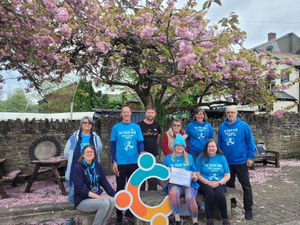Prescription painkiller rise in Telford and Wrekin
Prescriptions for strong painkillers have risen 20 per cent in Telford & Wrekin over the past three years.

Opioid painkillers, which include methadone, tramadol and morphine, are controversial because they can be addictive and have high mortality rates.
They are effective for relieving acute pain and pain near the end of a patient's life, but there is little evidence they are helpful for long term pain.
Doctors under Telford And Wrekin Clinical Commissioning Group's remit issued 5,817 prescriptions for opioids in 2017, up from 4,815 in 2014.
In Shropshire, doctors issued more than 8,600 prescriptions for the drugs last year – a similar number to three years ago.
But the figures for both Telford & Wrekin and Shropshire CCGs were higher than the national average last year.
There were 31.5 opioid prescriptions for every thousand patients in Telford & Wrekin, while the figure in Shropshire stood at 28.2.
The national average was 20.8 per thousand.
Researchers at the University of Oxford, who compiled the data, looked at high doses of opioids equivalent to a daily dose of 120mg.
The growth in the use of opioids has become a major health crisis in America, where more than 17,000 overdose deaths were attributed to prescription opioids in 2016.
In England and Wales, recent data from the Office for National Statistics shows that there were 829 deaths from opioids in 2016, excluding heroin, up from 711 in 2012.
Telford & Wrekin CCG says it is working closely with clinicians to raise awareness of the issues associated with the use of opioids in long-term pain.
Jacqui Seaton, head of medicines management for Telford & Wrekin CCG, said: “Whilst opioids are effective analgesics for acute pain and end of life care, they are of limited use for long-term pain.
“Side effects are very common and national data indicate that up to a quarter of patients taking opioids long term have developed dependence on them.
"This is why the CCG is working closely with our pain management service to promote non-drug options for pain management and appropriate use of analgesics in long-term pain management."
Ms Seaton says that although there has been a growth in prescription volume, the prescriptions issued are for smaller supplies or lower doses.
Shropshire CCG says it has already taken steps to help reduce the inappropriate use of prescribed opioids.
Elizabeth Walker, head of medicines management at Shropshire CCG, said: "Chronic pain and musculoskeletal problems, such as arthritis and back pain, increase with age and this can be a factor in more patients needing pain treatment and therefore leading to higher prescribing levels. This is consistent with other CCGs, with similar populations and demographics, nationally.
“Healthcare professionals take into account the benefits and risks of all medication options and discuss these with the patient before making a decision on the best course of action for the individual.
“Shropshire CCG has already taken steps to help reduce the inappropriate use of prescribed opioids and other analgesics, by focussing on improving pain management alternatives for patients such as increased access to physiotherapy and non-drug services, and will continue to explore further options.”
All CCGs in the lowest 10 per cent for opioid prescriptions were in London and the south of England.
Harry Shapiro, director of the drug information service Drugwise, said opioid usage and dependency tends to be more acute in areas of poverty and deprivation, but an older population will account for some regional variation.
He added: "We're also seeing an increase in prescribing at a time when GP surgeries are under huge amounts of pressure.
"There doesn't seem to be time or resources to examine other methods of pain management besides strong, dangerous painkillers."





